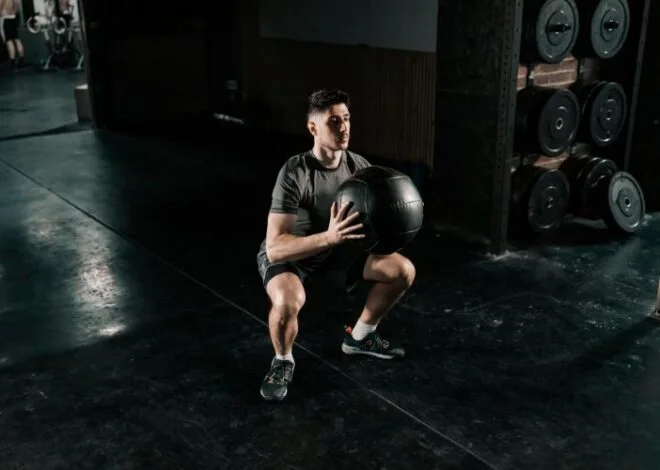
Inverted Row Workout A Complete Break down

The inverted row is an underrated yet highly effective exercise that targets multiple muscle groups while improving overall strength and posture. It’s a versatile movement that can be adjusted to suit all fitness levels, making it a valuable addition to any workout program. In this comprehensive guide, we’ll explore the mechanics, benefits, variations, and programming tips for incorporating inverted row workout into your fitness routine.
The Ultimate Guide To Inverted Row Workouts A Complete Breakdown
What Are Inverted Rows?
The inverted row, also known as the horizontal pull-up, is a bodyweight exercise that involves pulling your chest toward a horizontal bar while lying underneath it. Unlike traditional pull-ups that require vertical pulling strength, the inverted row focuses on horizontal pulling, which is critical for developing a balanced upper body.
Benefits of Inverted Rows Workout
Builds a Strong Back
The primary muscles worked during an inverted row include the latissimus dorsi (lats), trapezius, and rhomboids. These muscles play a crucial role in maintaining good posture, preventing back pain, and enhancing pulling strength.
Improves Posture
In a world dominated by sitting and hunching over screens, many people struggle with poor posture. Inverted rows strengthen the upper back muscles responsible for keeping the shoulders retracted and the spine aligned.
Enhances Your Core Stability With Inverted Rows Workout.
While it primarily targets the upper body, the inverted row also engages the core. Maintaining a straight, rigid body position throughout the movement challenges the abdominals and obliques.
Accessible for All Fitness Levels
The inverted row is highly adaptable. By adjusting the angle of your body or the height of the bar, you can make the exercise easier or more challenging to suit your current fitness level.
Reduces Risk of Imbalance
Most people focus on pushing exercises like push-ups and bench presses, often neglecting pulling movements. Incorporating inverted rows into your routine can correct muscle imbalances and reduce the risk of injury.
How To Perform an Inverted Row Workout
Step-by-Step Instructions
- Set Up Your Equipment
Position a barbell securely on a squat rack or use a Smith machine at about waist height. Alternatively, you can use a suspension trainer or sturdy parallel bars. - Position Yourself
Lie underneath the bar and grip it with an overhand grip, slightly wider than shoulder-width. Your body should be straight, with your heels on the ground and arms fully extended. - Engage Your Core
Tighten your core muscles to maintain a straight line from head to heels. Avoid letting your hips sag or arching your lower back. - Pull Yourself Up
Exhale as you pull your chest toward the bar, keeping your elbows tucked close to your body. Pause briefly at the top. - Lower Yourself Down
Inhale as you slowly return to the starting position, ensuring full control of the movement. - Repeat
Perform 8–12 repetitions for 3–4 sets, depending on your fitness goals.
Common Mistakes to Avoid
- Using Momentum: Ensure the movement is controlled and avoid jerking yourself up.
- Sagging Hips: Keep your body rigid to engage the core effectively.
- Incorrect Grip: Use a grip width that feels natural and allows full range of motion.
Variations of The Inverted Row Workout
Beginner-Friendly Variations
Elevated Inverted Row
Perform the row with the bar set higher to reduce the angle of your body, making the exercise less challenging.
Bent-Knee Inverted Row
Bend your knees and place your feet flat on the floor to decrease the load on your upper body.
Advanced Variations of Inverted Row Workout
Weighted Inverted Row
Place a weight plate on your chest or wear a weighted vest to increase resistance.
Single-Arm Inverted Row
Perform the row with one arm to increase the intensity and work on unilateral strength.
Suspension Trainer Row
Using a suspension trainer adds an element of instability, further challenging your core and stabilizer muscles.
Grip Variations of Inverted Row Workout
Underhand Grip Row
Switch to an underhand grip to emphasize the biceps.
Wide-Grip Row
Use a wider grip to target the upper traps and rear deltoids more effectively.
Programming Inverted Rows Workout
For Beginners
Start with 2–3 sets of 8–10 reps, focusing on perfect form. Use elevated or bent-knee variations to build strength gradually.
For Muscle Growth
To build muscle, aim for 3–4 sets of 10–12 reps with a challenging resistance. Progress by adding weights or using advanced variations.
For Strength
For maximal strength, lower the reps to 4–6 per set and increase the difficulty by adjusting the angle or adding weights.
As Part of a Superset
Pair inverted rows with a pushing exercise like push-ups or bench presses to create a balanced upper-body workout.
Sample Workouts Featuring Inverted Rows
Full-Body Workout
- Bodyweight Squats: 3 sets of 15 reps
- Inverted Rows: 3 sets of 10 reps
- Push-Ups: 3 sets of 12 reps
- Plank: 3 sets of 30 seconds
Upper Body Pull Day
- Pull-Ups: 3 sets of 8 reps
- Inverted Rows: 4 sets of 12 reps
- Dumbbell Rows: 3 sets of 10 reps per arm
- Face Pulls: 3 sets of 15 reps
Circuit Training
- Inverted Rows: 10 reps
- Jump Squats: 15 reps
- Push-Ups: 12 reps
- Mountain Climbers: 20 reps per side
Repeat for 3 rounds.
Tips for Maximizing Results
Progress Gradually
If you’re new to inverted rows, focus on mastering the basic form before attempting more advanced variations.
Incorporate Proper Warm-Ups
Warm up your shoulders, back, and core with dynamic stretches or light exercises like band pull-aparts.
Monitor Your Form
Always prioritize form over the number of reps or resistance to avoid injury and maximize muscle activation.
Inverted Rows vs. Pull-Ups: Which Is Better?
While both exercises are excellent for building upper-body strength, the inverted row targets the mid-back and posterior deltoids more effectively, whereas pull-ups emphasize the lats and biceps. Incorporating both exercises into your routine can create a well-rounded upper-body workout.
The inverted row is a versatile, scalable, and highly effective exercise that deserves a place in your workout routine. Whether you’re a beginner looking to build foundational strength or an advanced lifter aiming to correct muscle imbalances, the inverted row offers a wealth of benefits. Start incorporating this powerful movement into your fitness plan and experience the transformative impact it can have on your strength, posture, and overall health.














